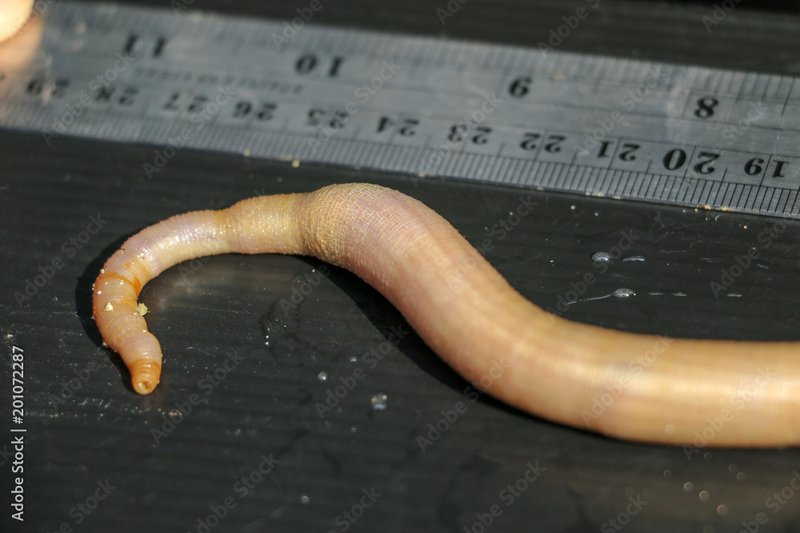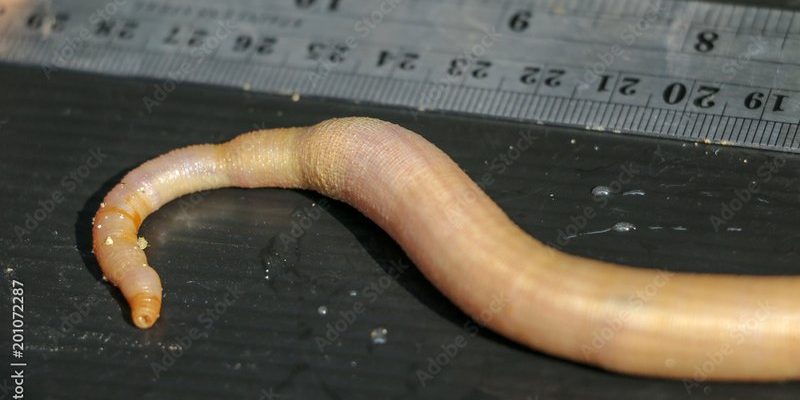
Now, you might be wondering what makes these creatures so special. Ribbon worms, or *Nemertea*, are not just long; they’re also ancient, with a history that spans hundreds of millions of years. Their size and adaptability have helped them thrive in various marine environments, including the deep sea and tidal pools. So, grab your coffee and let’s dive into the delightful world of ribbon worms and their record-setting lengths!
What Are Ribbon Worms?
Ribbon worms belong to a group of invertebrates known as *Nemerteans*. Unlike more familiar types of worms, ribbon worms have a unique way of hunting and locomotion. They possess a long, flattened body that resembles a ribbon, hence their name. These animals can vary in size from just a few inches to impressive lengths of over 100 feet in some species!
Here’s the thing: their bodies are not just long; they’re made up of specialized cells that allow them to stretch and contract. This ability enables them to navigate through tight spaces in the ocean floor while also hunting for food. Ribbon worms typically eat small fish, crustaceans, and even other worms. They do this using a long, retractable proboscis, which helps them snag their prey. Just imagine a super stretchy fishing line, but instead of catching fish, it’s catching all sorts of tiny creatures.
The Record Holder: Lineus longissimus
The title of the longest animal on Earth goes to the ribbon worm species *Lineus longissimus*. This creature has been recorded at astounding lengths of up to 120 feet! If that doesn’t blow your mind, think about it this way: that’s longer than a blue whale!
*Lineus longissimus* can be found in the shallow coastal waters of Europe and North America. One fascinating aspect of this ribbon worm is its remarkable ability to regenerate. If it gets cut or damaged, it can regrow lost sections of its body, making it a master of survival in a challenging environment.
These ribbon worms prefer sandy or muddy substrates, where they can burrow and hide from predators. They may spend their time coiled up, just waiting to ambush unsuspecting prey. The next time you’re at the beach, think about what might be lurking just below the surface!
How Do Ribbon Worms Move?
You might be curious about how such long creatures manage to move around without getting tangled up. Ribbon worms use a combination of muscular contractions and slime production to glide smoothly through the water and along the ocean floor. Their body is made up of soft tissue, allowing them to navigate tight spaces or burrow in the sand easily.
One remarkable feature of ribbon worms is their ability to extend their bodies significantly. When hunting, they can stretch to reach prey from a distance. This technique is like a high jumper using their legs to propel themselves for a grand leap—only in this case, it’s a worm using its entire body!
Additionally, their unique internal structure helps them stay hydrated and manage pressure. The body cavity is filled with a fluid that supports their long form and helps them move efficiently. It’s truly a marvel of evolution that these creatures have adapted to thrive in such a varied environment.
Where Are Ribbon Worms Found?
Ribbon worms are primarily found in marine environments all over the world. They enjoy habitats ranging from the shallow coastal waters to the deep sea. You might encounter them in tidal pools, muddy flats, or beneath stones in estuarine environments. Their adaptability to different conditions allows them to thrive virtually anywhere there’s moisture.
Some species prefer sandy bottoms near shorelines, while others are more at home in deeper, darker waters. This adaptability plays a significant role in their survival and helps them occupy various ecological niches.
However, ribbon worms can be elusive. Because they often burrow into the sediment, you might not see them unless you’re specifically searching for them. A fun fact is that many species are brightly colored, so while you may miss them at first, their vibrant hues are a telltale sign of their presence.
Feeding Habits of Ribbon Worms
Ribbon worms have a rather interesting approach to feeding, thanks to their unique anatomy. These creatures primarily feed on small fish, crustaceans, and even other worms. Their hunting technique typically involves using that amazing proboscis I mentioned earlier.
When prey comes close, the ribbon worm can shoot out its proboscis, which is often coated in a sticky substance, capturing the unsuspecting target. Think of it as an oceanic version of a chameleon’s tongue!
After securing their meal, they bring it back to their mouth located at the head of their body. Ribbon worms are opportunistic feeders, meaning if there’s a chance for a snack, they’ll take it. Their ability to feast on various prey types gives them a competitive edge in diverse marine environments.
Why Are Ribbon Worms Important to Their Ecosystem?
Ribbon worms play a crucial role in their ecosystems. By being both predators and prey, they help maintain the balance of their marine environments. As predators, they control populations of smaller creatures, ensuring no single species dominates the ecosystem. This balance is vital for maintaining biodiversity in marine habitats.
Moreover, ribbon worms also contribute to the nutrient cycling process. As they feed on various prey, they help break down organic matter, returning essential nutrients back into the soil. This process aids in maintaining the health of benthic (ocean floor) ecosystems.
Additionally, their presence signals a healthy environment. High populations of ribbon worms can indicate good water quality, as they often thrive in clean, well-oxygenated areas. So, every time you spot one of these long, fascinating creatures, know that it’s a sign of a thriving marine community!
The Future of Ribbon Worms
While ribbon worms have thrived for millions of years, they face challenges in today’s changing oceans. Climate change, pollution, and habitat destruction are significant threats to their populations. Rising ocean temperatures can alter their habitats, affecting food availability and breeding patterns.
Conservation efforts are crucial to protect these unique creatures and their ecosystems. Scientists are studying ribbon worms to better understand their biology and the effects of environmental changes on their populations. By raising awareness about the importance of ribbon worms, we can help advocate for their protection.
In addition to their ecological importance, understanding ribbon worms can also inspire curiosity and appreciation for the diverse life forms that share our planet. Every creature, no matter how small or seemingly insignificant, plays a role in the intricate web of life.
As we wrap up our exploration of ribbon worms, it’s clear that these creatures are far more than just long animals in the sea. They’re remarkable examples of nature’s ingenuity, thriving in a world full of challenges.
In the end, the next time you think about the longest animals on Earth, remember the incredible ribbon worm and all it represents in the ocean’s delicate balance.

